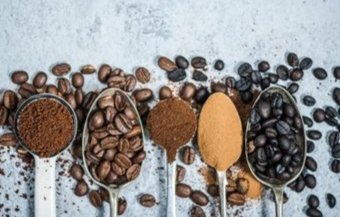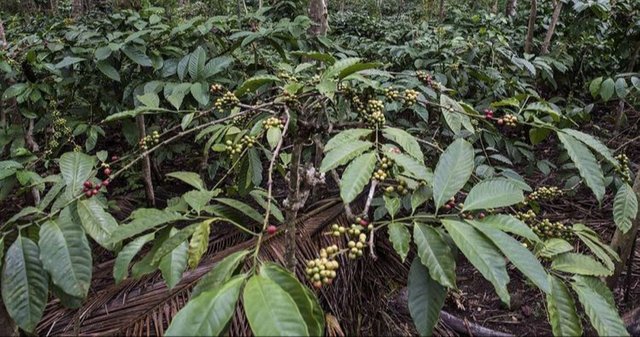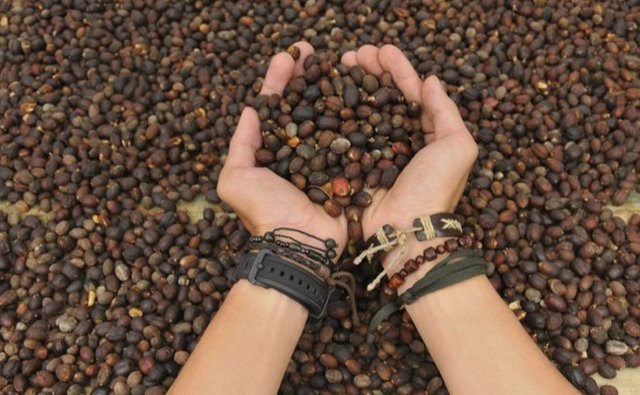The history of coffee in Indonesia is inseparable from the role of Dutch colonialism. In 1696, the Dutch first brought in Arabica coffee seeds to be planted on the island of Java.

The Dutch tried to cultivate the coffee seeds in the Kedawung area, a plantation near Batavia.
This is stated in the book Coffee: Aroma, Taste, Stories (2018) by Yandhie Arvian Et Al published by the Tempo Publishers Data and Analysis Center.
In the book, according to Prawoto Indarto, a researcher who studies the history of coffee also wrote the book The Road to Java Coffee, unfortunately the Dutch effort failed because the coffee plant was damaged by earthquakes and floods.
About 15 years later, the Regent of Cianjur Aria Wira Tanu sent about four quintals of coffee to Amsterdam. At that time coffee exports managed to break the record price at auction there.
Javanese coffee is popular in Europe
Coffee exports carried out by the Dutch government were high due to many requests from Europe.
Previously, the Dutch had expanded coffee cultivation on a large scale since 1696 with a forced cultivation system.
Coffee is considered to be a profitable commodity, the growing area is being expanded.
The area referred to as Sulawesi in 1750, the highlands of North Sumatra near Lake Toba in 1888, and Gayo near a freshwater lake in 1924.
In the coffee book: the aroma, the taste of the story, coffee exports from Java in 1726 as many as 2,145 tons flooded Europe. The number that was very much successfully shifted the Mocha coffee from Yemen at that time a market ruler. Since then, coffee from Java is popular with the name Java Coffee.
The popularity of Java coffee in the European realm before it was so high. That began 12 years before. At that time King Louis XIV asked the Mayor of Amsterdam Nicholas Witsen to send Coffea Seed Arabica Var. Arabica is also called Coffea Arabica L. Var. typica or typical.

King Louis heard the news about the high price of coffee in auction in Amsterdam. He wanted to make the coffee plant one of the collections of Jardin des Plantes Botanical Gardens in Paris. Coffee seeds for giving Nicholas Witsen come from the banks of Ciliwung, such as Malay Village and Meester Cornelis, the old name of Jatinegara. This area also became the initial area of coffee plantations in Java, whose coffee seeds were taken from Sri Lanka. The Indonesian coffee plantation was further broad, in 1706, coffee plants managed to grow well in several regions in Java.
To examine the quality, the Netherlands sent coffee seeds from Ciliwung to a botanical garden in Amsterdam. As a result, the coffee is good quality. While coffee beans are in the Jardin des Plantes in Paris, brought by French naval officers to Martinique, a French colony in the Caribbean. The more widespread Javanese coffee is in the world.
Coffee plantations in Indonesia are also expanding. The Governor-General of the Dutch East Indies, Joan van Hoorn, began distributing coffee seeds to Batavia, Cirebon, the Priangan area, and the north coast of Java.
It didn't stop there, in the early 1720s, the Dutch also sent Javanese coffee seeds to Suriname. They want to develop their plantations there. From these two regions, Javanese coffee seeds are increasingly spread to Central America and South America. Traces of Javanese coffee in Latin America, according to Prawoto, can still be seen today. There are the same characteristics as those from ancient Java in coffee plantations in Latin America.
Java coffee is infected with leaf rust
But the popularity of Java Coffee began to wane in 1880. At that time the coffee plant was attacked by the fungus Hemileia vastatrix or called leaf rust disease. The reason is, the fungus eats the leaves making it look like rust until finally the coffee plant dies.
Due to the fungus attack, Java lost its export potential of around 120,000 tons of coffee and caused the world coffee market to panic. This leaf rust disease was first discovered in Sri Lanka in 1869.
This disease mainly destroys Arabica coffee from Sri Lanka to Timor including Indonesia which is grown below an altitude of 1 km above sea level. Since then, Brazil and Colombia have become the largest Arabica coffee exporters to date.
The Dutch tried to overcome this by planting a liberika variant to replace the Javanese type, but failed.

Until finally in 1900, the plantation company Soember Agoeng in East Java purchased 150 Robusta coffee seeds from the Colonial Horticulture Nursery in Brussels, Belgium.
Colonial Horticultural Nursery that develops robusta coffee seeds. Robusta itself is a breed from Congo.
Apparently, robusta coffee plants are more resistant to leaf rust and can survive these pests. It is even said that the name robusta itself comes from the word 'robust' which means strong.
Since then, Robusta coffee has slowly started to replace Arabica in Indonesia until now. Indonesia has succeeded in becoming one of the largest robusta coffee producers in the world until now.
Gradually the popularity of Arabica coffee also began to push up. Especially with the existence of a close coffee drinking culture in Indonesian society. Plus more and more coffee shops are scattered to remote areas.
In the book 'Coffee', it is mentioned that currently arabica coffee plants can be easily found in several coffee-producing areas. These areas include the Ijen plateau, the Toraja Highlands, the Bukit Barisan mountains, Mandailing, Lintong, Sidikalang, and Gayo.
The Arabica coffee is specially produced into specialty coffee which has a very high economic value.
my respect to :
@steemingcuration
@advhl
@fabio
@juichi
@psicoparedes
@cryptokannon
Downvoting a post can decrease pending rewards and make it less visible. Common reasons:
Submit
!zen 30
Hello, your post is reviewed and upvoted using the @steemingcuration account
Thank you and continue posting here at Steeming Community
Downvoting a post can decrease pending rewards and make it less visible. Common reasons:
Submit
the post has been upvoted successfully! Remaining bandwidth: 220%
Downvoting a post can decrease pending rewards and make it less visible. Common reasons:
Submit